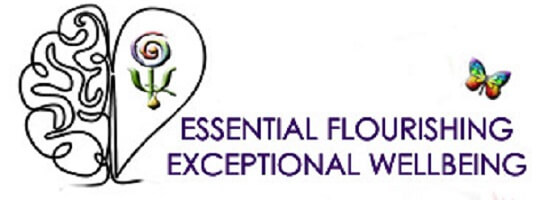Filler text. Please replace with your own text.
1. Benefits of a Sacred Space for Mental Health, Psychological Wellness, and Spiritual Consciousness
Mental Health and Psychological Wellness
- Stress Reduction: A calm, well-designed space can significantly reduce stress and anxiety by providing a retreat from daily pressures.
- Enhanced Focus: A designated sacred space can improve concentration and productivity by minimizing distractions.
- Emotional Stability: These spaces can create an environment for reflection and emotional balancing, helping to manage and process complex feelings.
Spiritual Consciousness and Metaphysics
- Spiritual Growth: Sacred spaces foster an environment conducive to meditation, prayer, and other spiritual practices, enhancing your inner growth.
- Energy Alignment: Creating a space with positive energy can help align your spiritual vibrations, encouraging feelings of peace and connectedness.
Emerging Evidence in Neuroscience and Neuro-Aesthetics
- Neuroscience: Research suggests that environments rich in aesthetically pleasing elements can improve brain function by stimulating positive neural responses.
- Neuro-Aesthetics: The study of how beauty and design impact the brain indicates that thoughtfully designed spaces can elevate mood and well-being by engaging visual and sensory systems.
2. How to Create a Sacred Space on a Small Budget
Decluttering and Organization
- Minimalism: Clear out unnecessary items to create a clean, open space. This reduces mental clutter and promotes a sense of calm.
- Storage Solutions: Use baskets, shelves, or boxes to organize and hide away items that aren’t in use.
Natural Elements
- Plants: Introduce houseplants to improve air quality and create a serene environment.
- Natural Light: Maximize natural light by using sheer curtains or placing mirrors to reflect light throughout the space.
Color and Decor
- Calming Colors: Choose soothing colors like blues, greens, and earth tones to promote relaxation.
- Personal Touches: Include items that hold personal or spiritual significance, like crystals, photographs, or small statues.
- DIY Projects: Create your own art, cushions, or other decor items to personalize the space without spending much.
Sensory Elements
- Aromatherapy: Incorporate essential oils or scented candles to invoke a sense of peace and well-being.
- Sound: Use a small water fountain, wind chimes, or a speaker to play relaxing sounds or music.
- Textures: Add soft throws, rugs, or cushions to make the space more inviting and comfortable.
Dedicated Space
- Small Area: Transform a corner of a room, a balcony, or even a small closet into your sacred space.
- Multi-Functional Furniture: Use furniture that can serve multiple purposes, such as a bench with storage or a foldable table.
Would you like more specifics on any of these points, Geli? Or perhaps some recommendations on where to find budget-friendly decor and materials?
G
You
Could you please expand the following: Emerging Evidence in Neuroscience and Neuro-Aesthetics Neuroscience: Research suggests that environments rich in aesthetically pleasing elements can improve brain function by stimulating positive neural responses. Neuro-Aesthetics: The study of how beauty and design impact the brain indicates that thoughtfully designed spaces can elevate mood and well-being by engaging visual and sensory systems.
GG
Absolutely, Geli! Here’s a more detailed expansion on the emerging evidence in neuroscience and neuro-aesthetics:
Emerging Evidence in Neuroscience and Neuro-Aesthetics
Neuroscience
- Cognitive Function: Recent studies in neuroscience suggest that environments with aesthetically pleasing elements, such as art, natural light, and harmonious colors, can improve cognitive functions. This is because these elements stimulate certain brain areas responsible for pleasure and satisfaction, thereby enhancing overall brain function.
- Stress Reduction: Engaging with beautiful and well-organized spaces has been linked to reduced cortisol levels, the hormone associated with stress. This makes aesthetically pleasing environments effective in lowering stress and promoting relaxation.
- Neural Stimulation: Environments that are visually stimulating can enhance neural plasticity, which is the brain's ability to change and adapt. Positive stimulation from a well-designed space can lead to improved mood, creativity, and problem-solving abilities.
Neuro-Aesthetics
- Engagement of the Senses: Neuro-aesthetics explores how sensory experiences of beauty, such as color harmony, light quality, and tactile sensations, can positively affect the brain. Thoughtfully designed spaces engage multiple senses, which can lead to enhanced emotional well-being.
- Mood Elevation: The study shows that exposure to beauty and well-designed elements can trigger the release of dopamine, a neurotransmitter associated with pleasure and reward. This can result in elevated mood and a sense of contentment.
- Therapeutic Benefits: Design elements like natural textures, biophilic design (which integrates nature into the built environment), and artwork have been found to have therapeutic effects. These thoughtfully included aesthetic components can assist in faster recovery from mental health issues, as they create a comforting and soothing atmosphere.
- Space and Personality: Personalized spaces that reflect individual tastes and stories can strengthen an individual's identity and self-esteem. This personal connection with the environment can lead to a greater sense of purpose and happiness.
Applications and Practicality
- Work Environments: Incorporating neuro-aesthetic principles in workplaces has shown to boost productivity and employee satisfaction. This includes using aesthetically pleasing furniture, natural lighting, and artwork.
- Healthcare Settings: Hospitals and therapy centers are increasingly using neuro-aesthetic design elements to create healing environments. Patients in rooms with views of nature, calming art, and soothing decor often experience reduced anxiety and quicker recovery times.
- Educational Spaces: Classrooms and learning environments that incorporate neuro-aesthetic design principles can enhance focus and motivation among students. These spaces make use of colorful, engaging, and well-organized designs to stimulate learning and creativity.
By integrating these findings from neuroscience and neuro-aesthetics, you can create a sacred space that not only looks beautiful but also supports mental health, emotional well-being, and spiritual growth.

DISCLAIMER
Your Mental Well-Being
Angelika (Geli) Heimann, and this website GeliHeimann.com, is committed to offer a clear distinction between Mental Wellness/Wellbeing and Mental Health Disorders!
Throughout this website and all connected social media accounts, please be aware that we strongly emphasize that Mental Wellness/ Mental Wellbeing is a holistic state of MENTAL/EMOTIONAL FLOURISHING that should not be equated to or confused with Mental Health Disorders.
If you or someone you know is grappling with any mental health challenges like depression, contemplations of self-harm, or beyond, reach out promptly to a qualified medical professional for immediate assistance.
Your well-being is what matters most, and seeking support is a courageous step toward a brighter and healthier future.
The information presented here is for educational purposes only. It is not intended to diagnose, prescribe or treat any health or psychotherapeutic condition and should not be used as a substitute for consulting with a professional health care provider.










ID : 1186737
Aroma Wellness Later-Life Flourishing Lifestyle
Angelika (Geli) Heimann
Angelika (Geli) Heimann

Copyrights © 2024 held by respective copyright holders, including Angelika (Geli) Heimann and Aroma Wellness in Your Wisdom Years



